High Fashion Group Images of Black People
We looked at 19 years of covers to find how Vogue represents women of all shades
Lawmaking and design by Amber Thomas & January Diehm
In 2014, Lupita Nyong'o, a Mexican-Kenyan actress and model, revealed that she used to pray for lighter skin. For nearly of her childhood, she saw her nighttime, "night-shaded" complexion as "an obstruction to overcome."
Lupita was talking about a facet of racism called colorism. It's the idea that, for people of colour, lighter pare is more desirable. In the same mode that white women volition have an easier time than women of color, light-skinned women of colour will have an easier time than dark-skinned women of color. So even though racial and ethnic diversity in style and the media is improving, dark-skinned women nevertheless aren't getting the representation they deserve.
To investigate this, we looked at the covers of Vogue mag, a bastion of mode that has been reporting on and setting trends for over a century. Vogue may be hiring women of many races, but are they representing women of all shades? (Vogue did not respond to multiple requests for comment.)
The Calculations
To analyze the terminal nineteen years of Vogue covers, nosotros calculated how light a model'due south skin looks in each photograph. That is, how the photographers and editors of Vogue chose to brandish her.
Here's how the calculation works:
Measuring only the lightness of a model'south pare tone in a particular photograph allows the states to compare all of our models based on a unmarried metric.
Pare Tones
In the by nineteen years, at that place take been 228 issues of Faddy, with a total of 262 female person cover models. Let's await at where these women autumn on the lightness spectrum:
Covers are also affected by forces you tin't see. Final year, Vogue'due south parent visitor Condé Nast lost roughly $120 1000000, and the mag'south younger sibling, Teen Vogue, ditched print operations in favor of internet-but digital covers.
Money woes are nothing new for magazines. They've been scrambling for at least the final decade and have been forced to continually reexamine their covers — how they look, what they sell, and who they feature. In the late 1990s, Vogue's editor-in-chief Anna Wintour fabricated a big change and replaced comprehend models with cover celebrities — the conventional wisdom being that the well-nigh familiar faces would bring in bigger profits. Of form, this reliance on the most familiar faces didn't always overlap with the virtually various faces.
Today, there's a tendency to focus more than on how a cover feels and less on what it sells. In an interview with The Ringer, Vanity Off-white deputy editor Claire Howorth said "The aspiration has shifted to being not so much well-nigh textile things but to a kind of cultural aspiration."
Just every bit magazines fight for survival with dwindling resources and a shrinking audience base, that doesn't mean they go a pass on being both thorough and thoughtful.
Tokenism
50et's take a closer look at the embrace models at the far-ends of this graphic. Beneath, y'all'll find the v darkest and lightest Vogue comprehend models of the past nineteen years.
Darkest Cover Models
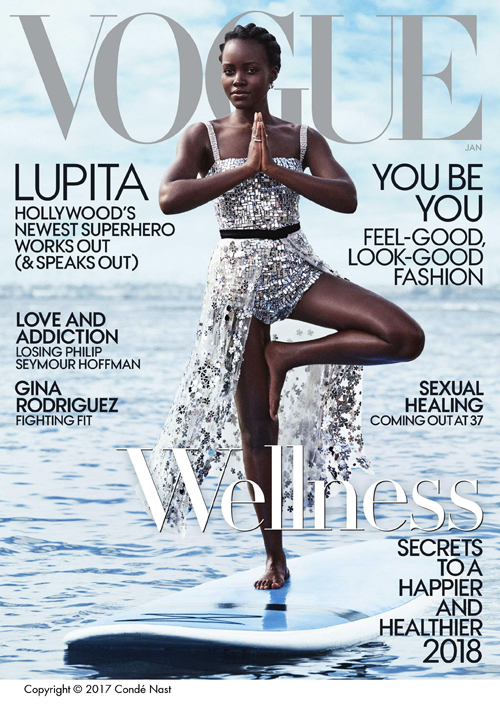
Lupita Nyong'o - 2018
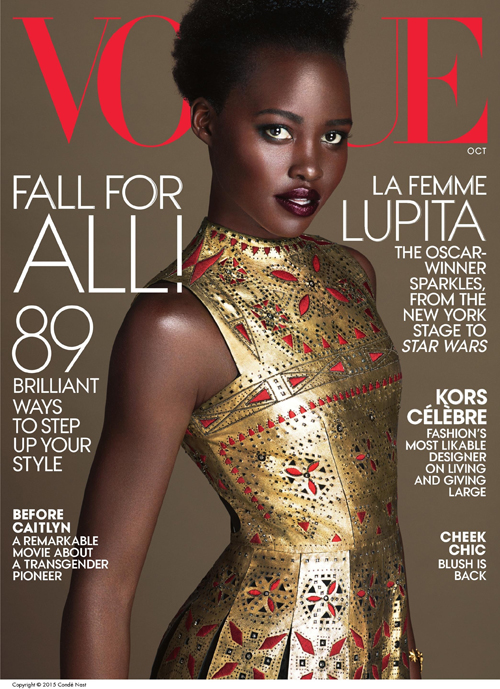
Lupita Nyong'o - 2015
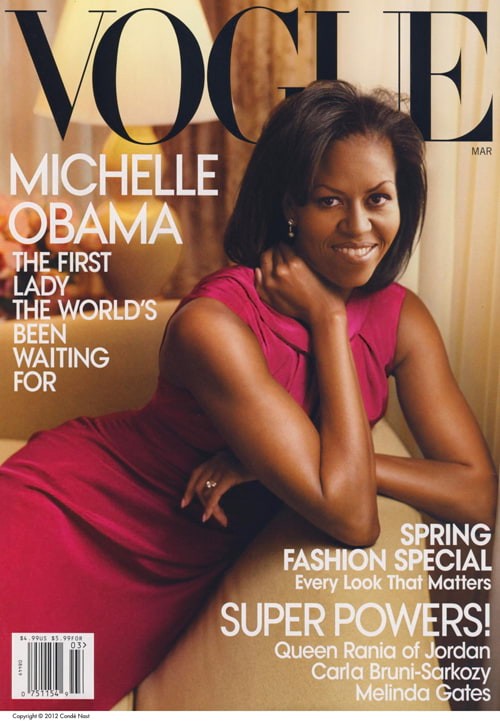
Michelle Obama - 2009
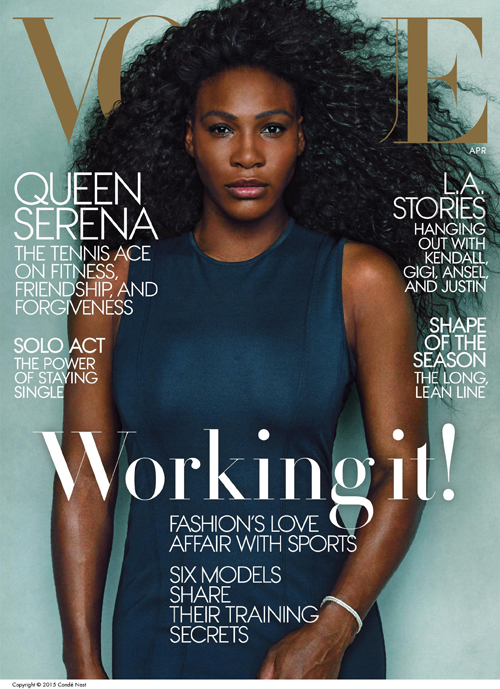
Serena Williams - 2015
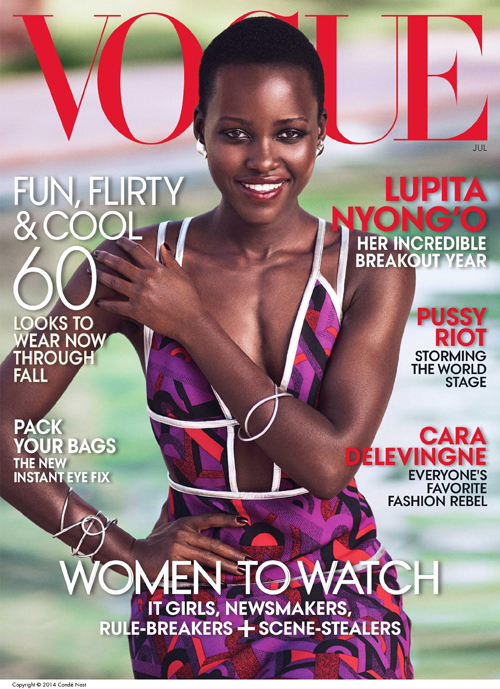
Lupita Nyong'o - 2014
Lightest Comprehend Models
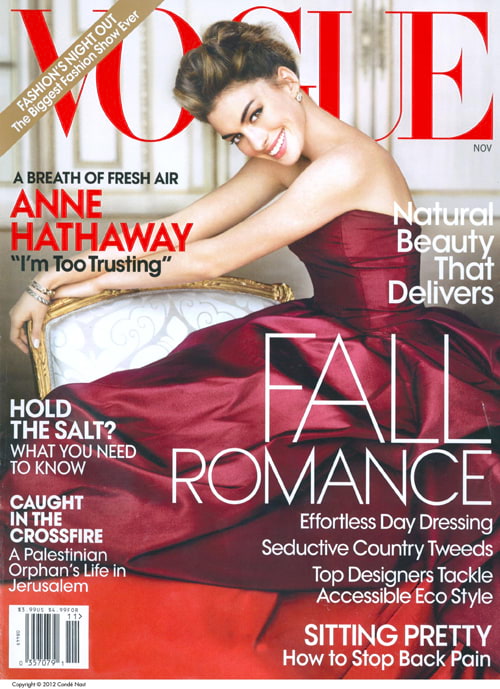
Anne Hathaway - 2010
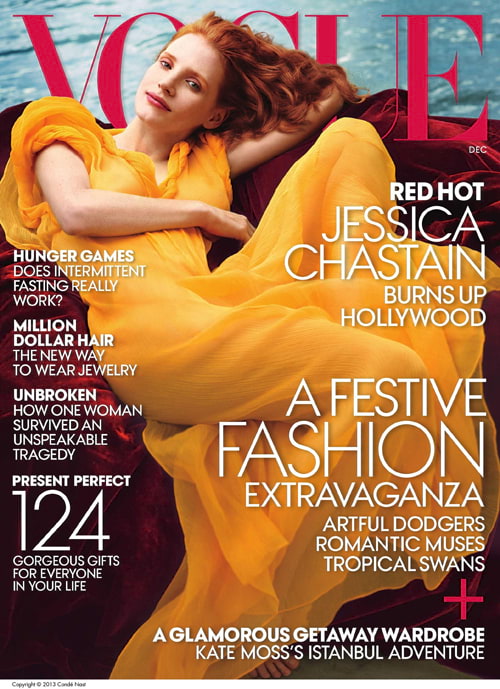
Jessica Chastain - 2013

Claire Foy - 2018
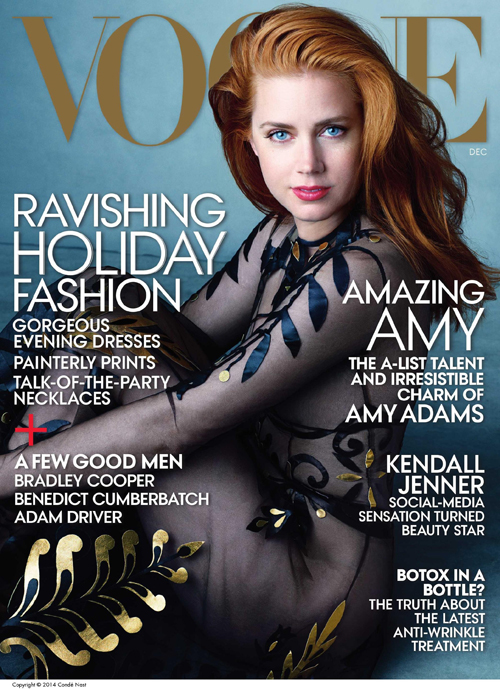
Amy Adams - 2014
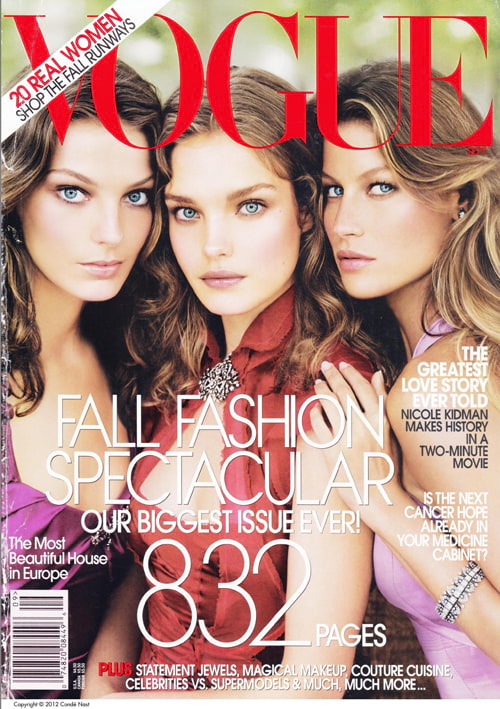
Natalia Vodianova - 2004
You lot may have noticed something curious about the v darkest models: three of the faces (a total 60%) are Lupita's. At this end of the spectrum, they're repeatedly showcasing the same adult female. Alternatively, on the light end of the spectrum, nosotros run across five distinct faces.
At a glance, you could argue that Faddy covers are diverse, or at least that they have gotten more diverse in contempo years. There are covers with black women and covers with dark-skinned women. Merely when nosotros really expect, information technology'southward easy to run into that the majority of the black women are light-skinned and the majority of nighttime-skinned women are actually a single person.
And black models accept actually been told past the style industry that a unmarried person IS enough representation. In an interview with the Times of London, Chanel Iman said "Designers accept told me, 'We already constitute one black girl. We don't need you anymore.'"
When an organization uses just one or two members of an underrepresented group in gild to accomplish the bare minimum of multifariousness, it'south called tokenism. Lupita is a successful and talented dark-skinned model and extra who deserves to be on the cover of Vogue, but by no means is she the but i in the industry (Viola Davis, Khoudia Diop, Astou, Letitia Wright, and Aja Naomi King, to name a few). Despite ignoring these other women, Faddy tin can point to a "token" as proof that they are diverse, while leaving Lupita responsible for representing a huge swath of readers.
Repeat Models
Although Lupita does account for the majority of dark-skinned models, she'due south not the only model who has graced the cover of Faddy more than once. Sixty-ii models (50% of our dataset) have been featured at least twice.
When we wait at the skin tones of one woman who has appeared on lots of covers, we observe something interesting: they tend to vary quite a chip. Lighting, staging, and post-photographic processing (i.due east., Photoshop) all play a function in creating the skin tone that we actually meet on the mag's embrace. Often, that skin tone ends upwardly appearing lighter than a model's bodily color and magazines get called out for "whitewashing." Ultimately, the same woman tin can end up looking quite dissimilar depending on who's shooting and editing her.
Perhaps the best case of this is Rihanna. Across her five Faddy covers, her pare tone lightness spanned twoscore% of the lightness range that we institute amidst cover models.
It's incommunicable for us to know what contributed the nearly to the dramatic differences in her skin tone beyond these five covers, but information technology should remind us that issues of colorism won't exist fixed only by hiring cover models of diverse shades. Vogue has had exactly one black photographer in 125 years of publication. It should go without saying that black photographers with lots of feel photographing blackness models will practise a ameliorate job. Information technology should also get without saying that magazines should be barred from using excuses similar "There aren't whatsoever qualified black photographers" or "We tin't find black photographers." It's 2019, the net exists, and in that location's an independent database of photographers of color.
Explore the echo model below. Click on any model to view all of her covers.
Darker Shades Lighter Shades
Conclusion
So what can nosotros say well-nigh Faddy mag? They've certainly come a long way since their first black comprehend model, dorsum in the seventies. Ethnic diverseness and representation is improving.
Concluding September, a black woman (Beyoncé) was shot by Faddy's starting time-ever black cover photographer (Tyler Mitchell) for the well-nigh important month in the fashion magazine agenda. That's progress, only it doesn't alter the fact that Lupita is the only dark-skinned professional person model on the embrace of Vogue in the past nineteen years. Vogue (and the entire mode manufacture) can exercise ameliorate.
Methods
The covers were downloaded from The Vogue Annal (paywall, but most public libraries accept memberships) . Only covers from January 2000 through December 2018 were used, since earlier covers were scanned and had inconsistent color quality.
The covers were fed into a script that identified the faces of models and cropped the images down to size. The script produced many false positives, which were identified and removed by hand, along with the faces of male models.
For each face, several thousand-ways clustering models were fit. The clustering models varied in terms of which features were used (some combination of the rgb and hsl color values) as well as how many clusters were formed (2 or three). Since the style of the covers varied so differently, unlike clustering models did a practiced job at identifying the peel. The script filtered out just the pixels that were determined by the reckoner model to contain skin, and calculated and stored the median rgb color, as well as the corresponding lightness value. Two people double checked that the clustering models were outputting valid results that visually made sense based on the input photos, and the results of all of the valid clustering models were averaged together.
0 Response to "High Fashion Group Images of Black People"
Post a Comment